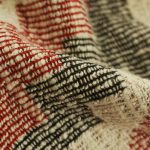Did you know Merino wool can absorb up to 30% of its weight in moisture without feeling wet? If you’re looking for a fabric that keeps you dry and comfortable no matter the activity, this natural fiber might be worth a closer look. Its unique ability to manage sweat and regulate temperature sets it apart from synthetic options, but how does it actually perform in real-world conditions?
Table of Contents
Key Takeaways
- Merino wool effectively wicks moisture away from skin, keeping wearers dry and comfortable during physical activities.
- Its breathable fibers allow efficient evaporation, preventing clamminess and overheating.
- The fabric dynamically adapts to moisture levels, maintaining consistent comfort in varying conditions.
- Merino’s natural odor resistance enables extended wear without unpleasant smells, enhancing performance use.
- Combined with temperature regulation and durability, Merino wool offers superior all-season moisture management.
How Merino Wool Manages Moisture for Optimal Comfort
Although you mightn’t notice it, Merino wool actively manages moisture to keep you comfortable. Its natural fibers excel at moisture absorption, pulling sweat away from your skin and trapping it within the fabric. This prevents you from feeling clammy or damp during physical activity or daily wear.
What makes Merino wool stand out is its exceptional fabric breathability, allowing air to circulate freely and moisture to evaporate efficiently. This balance means you stay dry without overheating or chilling.
Unlike synthetic materials, Merino wool adapts to your body’s moisture levels, maintaining comfort in varying conditions. When you wear Merino wool, you experience a smart fabric that works with your body to manage moisture effectively, enhancing your overall comfort throughout the day.
Temperature Regulation: Staying Warm and Cool With Merino Wool
When temperatures shift, Merino wool adjusts to keep you comfortable by regulating your body heat. Its natural temperature control properties help you stay warm when it’s cold and cool when it’s hot.
The fibers trap heat close to your skin during chilly conditions without causing overheating. Thanks to excellent breathability factors, Merino wool allows moisture and air to circulate, preventing sweat buildup. This airflow keeps you dry and cool in warmer weather.
You don’t have to change clothes as often because the fabric adapts dynamically to your environment. Whether you’re hiking in the mountains or running errands in town, Merino wool offers reliable comfort by balancing insulation and ventilation, making it an ideal choice for versatile, all-season wear.
Odor Resistance and Hygiene Benefits of Merino Wool
Along with regulating temperature, Merino wool keeps you feeling fresh by naturally resisting odors. Its fibers have a unique structure that traps odor-causing bacteria, preventing them from building up on your clothing.
This odor control means you can wear Merino wool garments for extended periods without smelling unpleasant, making them ideal for active lifestyles or travel. You’ll also appreciate the hygiene benefits, as Merino wool is naturally antimicrobial and helps reduce bacteria growth.
This reduces skin irritation and keeps your clothes cleaner for longer. When you choose Merino wool, you’re not only getting superior comfort but also reliable odor resistance, so you stay fresh and confident throughout the day without needing constant washing or chemical treatments.
Durability, Care, and Performance in Everyday Use
Because Merino wool combines strength with softness, it stands up well to daily wear and tear without losing its shape or comfort. You’ll find its fabric longevity impressive, especially when you follow proper care instructions. Washing it gently and avoiding high heat keeps your Merino gear looking and performing like new. Its natural elasticity also means it resists wrinkles and sagging.
| Care Aspect | Recommendation | Benefit |
|---|---|---|
| Washing | Use cold water, gentle cycle | Preserves fibers |
| Drying | Lay flat to dry | Prevents shrinking |
| Detergent | Mild, wool-specific | Maintains softness |
| Storage | Fold, avoid hangers | Retains shape |
Merino wool’s durability and easy care make it perfect for your active lifestyle.
Environmental Impact and Sustainability of Merino Wool
Beyond its durability and ease of care, Merino wool also offers significant advantages for the environment.
When you choose Merino, you support sustainable farming practices that prioritize land health and animal welfare. These farms use rotational grazing to prevent overgrazing and reduce soil erosion, helping maintain ecosystems.
Ethical sourcing guarantees that sheep are treated humanely, which aligns with your values if you care about animal rights.
Plus, Merino wool is biodegradable, meaning it breaks down naturally without leaving harmful residues. Compared to synthetic fibers, it has a much lower carbon footprint.
Frequently Asked Questions
How Does Merino Wool Compare to Synthetic Fibers in Moisture Wicking?
You’ll find merino wool benefits include superior moisture absorption and odor resistance, while synthetic fiber drawbacks involve trapping sweat and causing odors. So, merino wool keeps you drier and fresher during intense activities.
Can Merino Wool Cause Allergies or Skin Irritation?
About 1 in 100 people experience merino wool allergies, causing skin irritation. You might react due to lanolin or fiber sensitivity, so if you notice itching or redness, it’s best to switch fabrics or wash the wool thoroughly.
Is Merino Wool Suitable for People With Sensitive Skin?
If you have sensitive skin, you’ll appreciate the sensitive skin benefits of merino wool. It offers exceptional merino wool comfort, reducing irritation and itchiness, so you can stay cozy without discomfort during any activity.
How Quickly Does Merino Wool Dry After Washing or Sweating?
Moisture meets merino, making drying time manageable. You’ll notice it’s not the fastest, thanks to moderate moisture retention, but it dries decently after washing or sweating, keeping you comfortable without clinging or damp delays.
What Are the Best Ways to Layer Merino Wool With Other Fabrics?
You should use layering techniques by pairing merino wool with synthetic fabrics for moisture control and breathability. Combining it with polyester or nylon enhances comfort, while adding a windproof outer layer helps regulate temperature effectively during activities.
- Does Chiffon Fabric Stink - July 15, 2025
- Does Chiffon Fabric Affect the Economy - July 15, 2025
- Does Cotton Fabric Have a Nap - July 15, 2025







